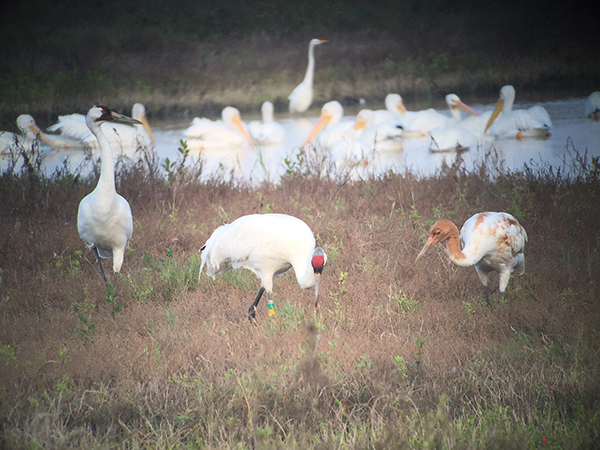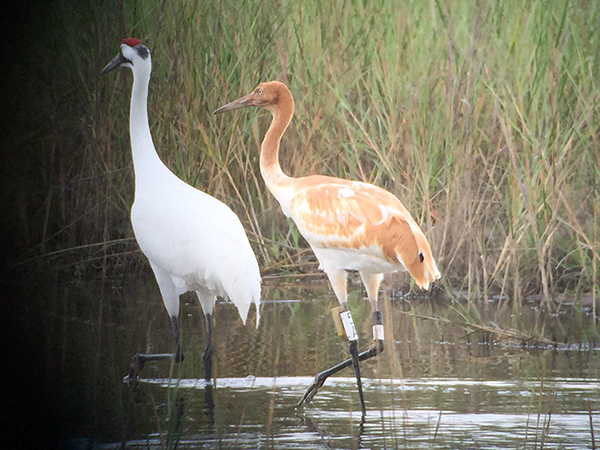
Along the coast of Texas, the morning of Dec. 5, 2017, was perfect. Clear star-filled skies merged into a gorgeous sunrise over the Gulf of Mexico, amidst a calm that reflected Whooping Cranes and White Pelicans in mirror-like waters of the Aransas National Wildlife Refuge.
Accompanied by filmmaker Cody Altizer, we had a window of six hours to briefly tell the story of the rarest of cranes recently arrived and still arriving at the refuge after a migration of 2,800 miles from their nesting areas in northern Canada. At noon a storm was predicted to drop temperatures along with heavy rain.
Before the sun appeared, we viewed 10 Whooping Cranes and dozens of White Pelicans at their roosting area on a man-made compound at the south end of the refuge. Behind them resting for the night in the Intracoastal Canal that transects the refuge, an enormous two-story, lighted barge was a solemn reminder of fragile habitat and priceless birds threatened by a single accident and spillage of untold tons of toxic cargo into the wetlands.

The cranes stood close together on one leg with head and neck tucked under a wing. In the darkness, it was difficult to distinguish crane from pelican. As the light increased, pairs of cranes with stiff exaggerated strides and loud duets threatened one another as they separated from the shared roosting spot. Eventually, they flew in pairs and family groups north to defend daytime territories that included several hundred acres of wetlands rife with favorite foods – wolfberries (below), blue crabs, snakes and other items opportunistically grasped and consumed as the cranes slowly searched the shallows.

In our small boat owned and operated by Kevin Sims, we turned left into the Intracoastal Canal to observe cranes on their defended real estate. There was not a breath of wind. Boats and barges were absent. A silence prevailed all morning penetrated only by the infrequent splash of a fish and the calls of birds, especially Whooping Cranes.
The duet of the Whooping Crane, the unison call, is a territorial proclamation (click here to listen to a unison call). If neighbors approach the invisible boundary of a territory, the resident pair emits a unison call. The invaders respond likewise, as do other crane pairs in more distant locations. The display is contagious with widespread bouts happening every half-hour or so. It’s the music of the marshes.
Cody was pleased to film cranes at close range as well as a few dramatic territorial confrontations. When we returned to Kevin’s dock at about 11:00 a.m., rain, wind and plunging temperatures greeted us. We had experienced the Whooping Cranes during the calm before the storm.
 Story submitted by George Archibald, Co-founder and Senior Conservationist. Click here to learn more about our work in North America.
Story submitted by George Archibald, Co-founder and Senior Conservationist. Click here to learn more about our work in North America.
